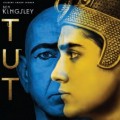Complete Guide to Spike's TUT: Character Descriptions, Episode Guide, Interviews, Making Of + Videos
Maj Canton - July 18, 2015

TUT is an epic three-night event, shot entirely on location in Morocco in fall 2014, that features Ben Kingsley as Ay, the Grand Vizier to King Tutankhamun, who wields tremendous power and influence as the top advisor to the young Egyptian ruler. The role of King Tutankhamun is played by Avan Jogia, known for his previous roles on VICTORIOUS and TWISTED. TUT is Spike TV's first scripted event/limited series since THE KILL POINT in 2007, and premieres Sunday, July 19 through Tuesday, July 21, 2015, airing nightly from 9-11pm ET/PT.
Thrust into power after the murder of his father, Tutankhamun (King Tut) is forced to marry his strong willed, ambitious sister in order to maintain the dynasty. In love with a commoner, he struggles to protect her from the jealous queen. And although Tut rules as Pharaoh, he is exploited by a shrewd Grand Vizier, a ruthless military General and a scheming High Priest who look down on him as someone they can control. But through unexpected twists and turns, Tut strives to overcome the odds, rising from a manipulated prince into an unlikely hero who triumphs over his enemies both from within and without leading his kingdom to glory.
To prepare for the premiere of TUT, we've assembled a complete guide with character descriptions, episode guide, interviews with the writer and director, behind-the-scenes and making-of facts, videos, and more
|
|
Character Descriptions
|
|
|||
|
GRAND VIZIER AY (Ben Kingsley) |
|||
 |
Ben Kingsley stars in the key role of Ay, the Grand Vizier to King Tutankhamun, who wields tremendous power and influence as the top advisor to the young Egyptian ruler. Click here to see a one-minute video of the cast of TUT discussing the complexities possessed by character Ay. |
||
|
|
|||
|
KING TUTANKHAMUN (Avan Jogia) |
|||
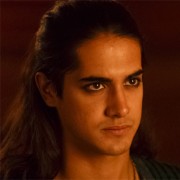 |
Avan Jogia is the young renowned Egyptian ruler, King Tutankhamun. Click here to see a video profile of King Tut. Click here to see a one-minute video of Avan describing his experience playing the legendary King Tutankhamun. |
||
|
|
|||
|
GENERAL HOREMHEB (Nonso Anozie) |
|||
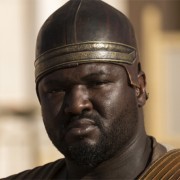 |
Nonso Anozie as the savvy military, yet power hungry, strategist General Horemheb. Click here to see a one-minute video about the general who seeks to fight for an everlasting Egypt. |
||
|
|
|||
|
ANKHE (Sibylla Deen) |
|||
 |
Sibylla Deen portrays Ankhe, the calculating and conniving sister-wife of King Tutankhamun. Click here to see a one-minute video and learn why Ankhe chooses to protect the legacy of Tut, even if it means sacrificing her own happiness. |
||
|
|
|||
|
SUHAD (Kylie Bunbury) |
|||
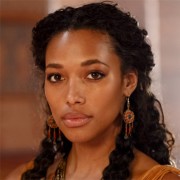 |
Kylie Bunbury plays Suhad, the beautiful and endearing girl of Mitanni descent who develops a strong bond with the young Egyptian king, despite the fact she is not of royal bloodlines. Click here to see a one-minute video about this Egyptian commoner, whose love for King Tut puts her amidst those with extraordinary power. |
||
|
|
|||
|
HIGH PRIEST AMUN (Alexander Siddig) |
|||
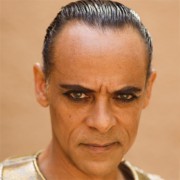 |
Alexander Siddig as High Priest Amun, a major political figure who holds great influence in King Tutankhamun’s inner sanctum. Click here to see a one-minute video about this high priest who, even though he may have the ear of the gods, fights to be heard by King Tut. |
||
|
|
|||
|
KA (Peter Gadiot) |
|||
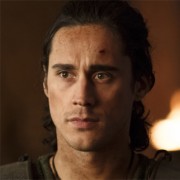 |
Peter Gadiot is Ka, King Tutankhamun’s close confidant and seemingly loyal friend from childhood who harbors a secret love for Ankhe, Tut’s wife. Click here to see a one-minute video and learn about Ka's influences over his best friend. |
||
|
|
|||
|
LAGUS (Iddo Goldberg) |
|||
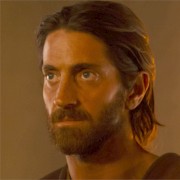 |
Iddo Goldberg portrays Lagus, an Egyptian soldier who develops a special bond with King Tutankhamun. Click here to see a one-minute video and meet this committed soldier, a man of the people and trusted servant of King Tut. |
||
|
|
|||
|
|
Episode Guide
NIGHT ONE |
|
|
|
|
INTERVIEW WITH MICHAEL VICKERMAN (Writer and Executive Producer)
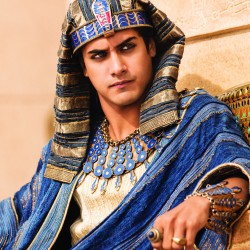 |
QUESTION: How did this story come to you? |
||
|
QUESTION: What is the story of Tut being told in this miniseries? |
|||
|
|
|||
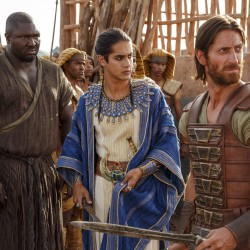 |
QUESTION: What was going on in Egypt before Tut became pharaoh? |
||
| QUESTION: Who else is Tut’s adversary? ANSWER: Tut has three adversaries – actually four, being his sister Ankhe when Tut’s love Suhad, arrives in the palace. The first is the high priest Amun who does not want to lose his power. When he senses that Tut might want to change the current religious structure, he maneuvers to take him out. The second is General Horemheb, a man of battle and glory. He doesn’t care much about politics but he would like to conquer the world. When Tut says let’s protect the kingdom from enemies and not expend more lives on grabbing more territory, Horemheb is not happy. He has never had to answer to anyone. He’s always had autonomy in the field of battle and now there’s this young Pharaoh trying to move in and prove himself on the battlefield. The third adversary is the Vizier Ay. He is really the most complex of the characters because he is loyal but also has his own agenda. He’s always wanted to be Pharaoh, but he would never stab the knife himself. Ay knows his place in the world, but he’s always looking for a way in to a place where he can manipulate and take advantage. Ay is always in the shadows and so we’re never quite sure where he is. |
|||
|
|
|||
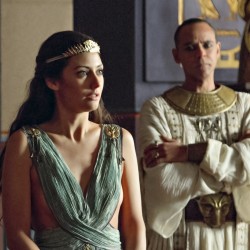 |
QUESTION: Please tell us about Queen Ankhesenamun. |
||
|
|
|||
INTERVIEW WITH DAVID VON ANCKEN (Director and Executive Producer)
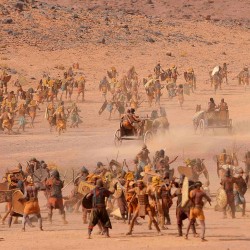 |
QUESTION: Tell us about the challenges of filming the big battle scenes in TUT. |
||
|
We used a dozen horses to take turns pulling chariots. When you consider that the wheels on the chariots are 400lbs. each and the chariots are moving at 40kmh down the hill, there’s no stopping them once they get going. We used stunt men around the horses to protect the actors and background extras from getting too close to the chariots. We tethered four chariots together which had to be done very precisely because if they crashed people would get hurt. Safety was our primary focus. That being said, we wanted the battle scenes to look bad ass: to look like people were really getting killed by spears, swords and cudgels. Our 60 stuntmen fought aggressively with real punches and throws, because these guys can take it and know how to handle themselves. |
|||
|
|
|||
 |
QUESTION: In another battle scene, Tut and Suhad try to break Lagus out of the Mitanni prison. Tell us what was involved in filming that scene. |
||
| QUESTION: Another big scene is the fire that is set purposefully in a quarantined neighborhood of Thebes to wipe out the plague. Please tell us about it. ANSWER: We needed the fire to feel real but safety was always the first consideration. We had multiple layers of fire; including accelerants, flame bars and pine pitch. We needed to have water trucks and fire marshals nearby because all our sets were quite flammable - made out of wood, plaster and bamboo, painted to look like stone and rock. Suhad had to run through the burning building along with background extras and stunt performers. It feels real because with all the smoke, she couldn’t see ten feet in front of her. |
|||
|
|
|||
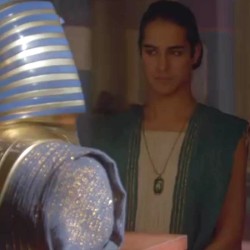 |
QUESTION: The miniseries ends on a big funeral scene. We see Tut’s death mask, which is the iconic image associated with Tutankhamun. Tell us about it. |
||
|
|
|||
A BRIEF HISTORY OF THE LIFE OF TUTANKHAMUN
(18th dynasty New Kingdom 1332 BC – 1323 BC)
|
TUT’S LIFE |
|||
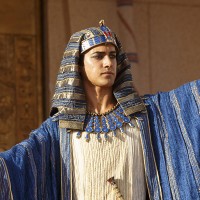 |
Tutankhamun, popularly known as King Tut, lived a short life during the 18th Egyptian dynasty known as the New Kingdom, in 14th century BC. Much of Tut's life is shrouded in mystery and legend, but it is known that his father was the former pharaoh, Akhenaten, and his mother was one of his father's close relatives. He ascended to the throne around the age of nine, at which time he married his half-sister, Ankhesenamun. Tut and his wife never produced any viable offspring. |
||
|
|
|||
|
TUT’S DEATH |
|||
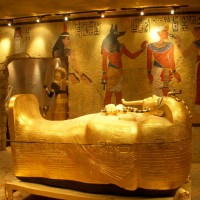 |
Tut died in his late teens. His cause of death is unknown, although some researchers have speculated that Tut suffered from malaria, as well genetic disorders due to the close relation of his parents. Tut's remains show evidence of cranial damage, leading many to believe he was assassinated. |
||
|
|
|||
|
TUT’S LEGACY |
|||
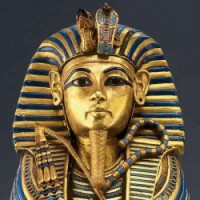 |
Tut’s famed gold-and-blue death mask may be the most iconic single artifact from ancient Egypt. He has achieved his current status as the most famous pharaoh mostly due to the ubiquity of his burial mask and the pervasiveness of his catchy nickname (“King Tut”) in popular culture. Tut’s tomb was one of most well preserved of any pharaoh yet unearthed. Although Tut’s mummy remains in his tomb in the Valley of the Kings, many of the glimmering gold items with which he was buried have been displayed in museums all over the world. At one time, before stricter measures had to be instituted to preserve Tut’s tomb and mummy, thousands of visitors per day entered the burial site to participate in this fascinating piece of history. |
||
|
|
|||
|
HISTORY REVEALED: 7-MINUTE VIDEO |
|||
|
|
ABOUT THE PRODUCTION/MAKING OF TUT
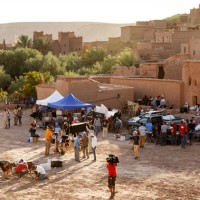 TUT went into production in Ouarzazate, Morocco in summer 2014. |
"Every day we were faced with challenges,” says Joel Rice, executive producer and head of Muse Entertainment USA. “For weeks we had blazing sun and temperatures over 107 F. We also faced wind storms and sand storms that blew away sets. It hardly ever rains in Morocco, but when we were filming we had flooding. We also had rainstorms that damaged costumes and freshly painted buildings.” |
||
| The sheer size of the battle scenes which required 800 extras in costume, hair and makeup, each carrying props – during the heat wave - proved to be another challenge for Tut’s crew. “We had people from many different countries working on the show and that was fantastic, but also challenging because they had different working styles and expectations. They had to assimilate their way of doing things to the way it works in Morocco, and that wasn’t always easy,” says Rice. The production team of Tut faced numerous challenges in the setting and design of the miniseries. The producers decided to have the setting as realistic as possible, so the whole shooting took place in Ouarzazate, Morocco, North Africa’s film capital. Ouarzazate provides a wealth of scenery, natural backdrops and three studio back lots where many North American and European blockbusters have filmed. Close by is the desert, ancient towns and several beautiful oasis. “We wanted Tut to look and feel as authentic as possible,” says Executive Producer Michael Prupas who is CEO of Muse Entertainment. “So everything – from palaces, temples, villages and towns to furnishings, decor, clothing, jewelry, worship, mood and behavior- had to look as it might actually have been in Ancient Egypt 3,000 years ago.” A total of 63 sets were built for the production. Headed by Production Designer Michael Hanan, the art direction team comprised three art designers, seven set designers, two digital model makers as well as a crafts crew of more than 650 people. Hanan researched the 4000-year-old monuments of Ancient Egypt the more amazed he became at what was accomplished. “Their engineering and architectural achievements are beyond comparison. Many of the ancient temples and monuments, buried for centuries by the Sahara desert, have now been excavated so we have a real sense of their enormous size and relationship to human scale. For the Royal Place courtyard eery stone and every column was painstakingly hand built. The columns were created by pouring plaster into sculpted molds. ”We used no fiberglass and no plastics - and the result is a lot better. This construction is old-school-Hollywood, the way they used to do it,” Hanan explains. “The hard concrete and plaster surfaces have different sound resonance. They reflect sound whereas lighter weight materials absorb sound. It adds to the realism and gives the actors a boost. When you have someone like Ben Kingsley, who has tremendous presence and gravitas, you want to give him real hard surfaces that modulate his voice - and not fake surfaces.” Over a period of two months a crew of 20 built 12 giant Sphinxes for the City Gates and the Temple set. They cast eight in resin and the rest in plaster. “We copied the Sphinxes that stand in Egypt today outside an ancient tomb,” says David Ensley, one of Tut’s art directors, “Everything we used visually is based on something real.” Over 1,000 props were made by hand for Tut, including knives, swords, daggers, bows, arrows, spears and shields. “We worked 24/7 from the end of June 2014 and it was quite a task,” says Curtis Akin, prop master. The famous death mask that King Tut was buried in was also replicated in England at a cost of $20,000. “There are a lot of replicas out there but we couldn’t find one that perfectly fit our show, so we had to have one made.” The costume department, headed by Costume Designer Carlo Poggioli from Italy, built more than 5000 items of clothing including tunics, skirts, abayas, dresses, armor, headpieces, leg and wrist protectors for Tut’s actors and extras. In addition, 1700 pairs of leather footwear were made and more than 300 items of jewelry hand created in Tut’s studio workshops. Costumes were designed for all the actors as well as for all the extras who worked as Mitanni and Egyptian soldiers, peasants, slaves, servants, maidens, dancers, officers, commandos, guards, priests and dignitaries. The costume department dressed roughly: 400 Egyptian soldiers, 500 Mitanni soldiers, 600 noblemen, middle and lower class Egyptians. |
|||
|
|
|||
|
MAKING OF: 2-MINUTE VIDEO |
|||
|
|

